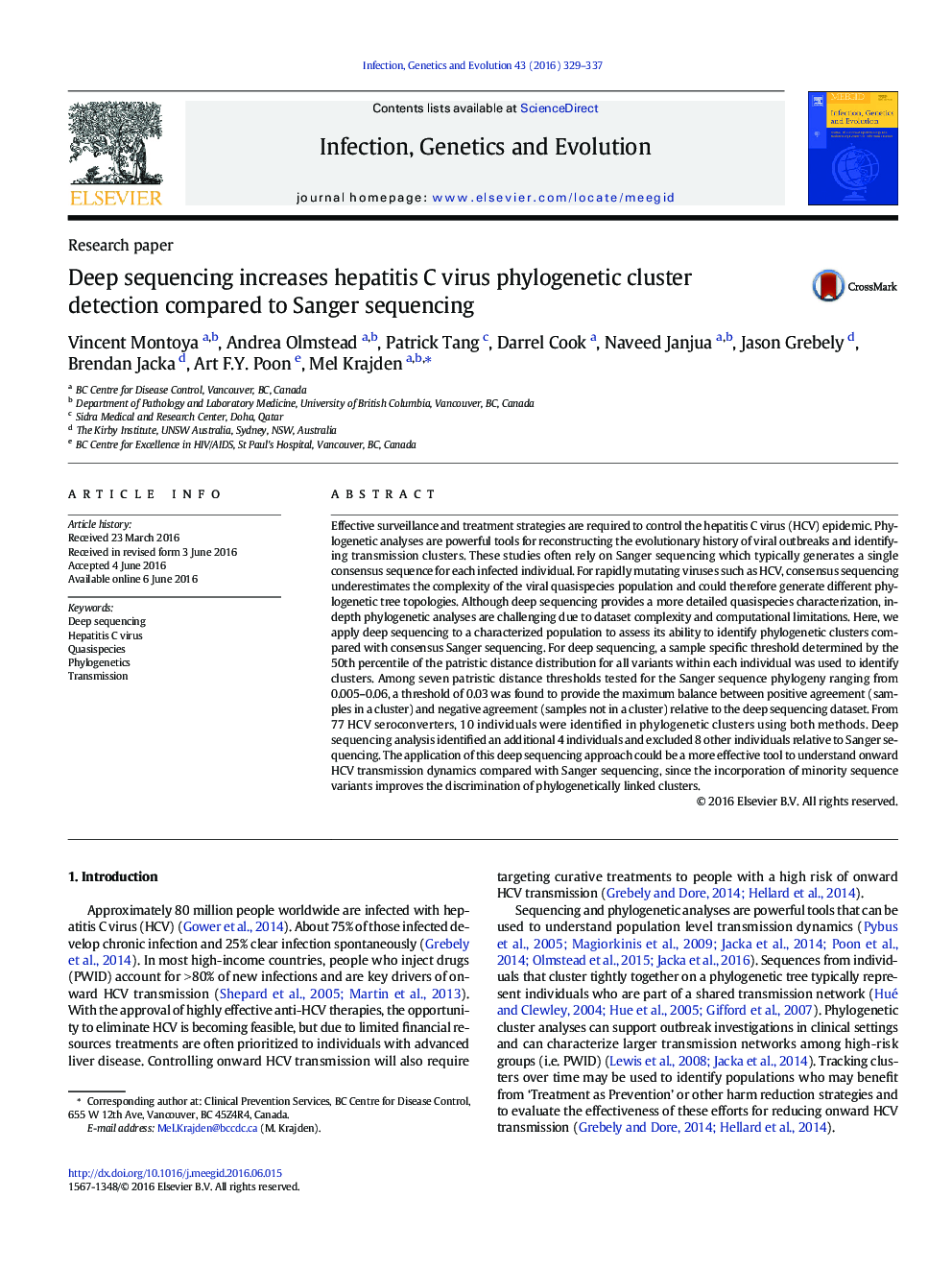| کد مقاله | کد نشریه | سال انتشار | مقاله انگلیسی | نسخه تمام متن |
|---|---|---|---|---|
| 2822975 | 1570160 | 2016 | 9 صفحه PDF | دانلود رایگان |

• A novel method was developed to detect phylogenetic clusters among HCV infected individuals from deep sequencing data
• Compared with Sanger sequencing, clusters were identified that would have been missed without a deep sequencing approach
• We also identified general differences in phylogenetic tree topologies between deep / Sanger sequencing
• This method was implemented in Python, and is freely available to test / download online via GitHub
Effective surveillance and treatment strategies are required to control the hepatitis C virus (HCV) epidemic. Phylogenetic analyses are powerful tools for reconstructing the evolutionary history of viral outbreaks and identifying transmission clusters. These studies often rely on Sanger sequencing which typically generates a single consensus sequence for each infected individual. For rapidly mutating viruses such as HCV, consensus sequencing underestimates the complexity of the viral quasispecies population and could therefore generate different phylogenetic tree topologies. Although deep sequencing provides a more detailed quasispecies characterization, in-depth phylogenetic analyses are challenging due to dataset complexity and computational limitations. Here, we apply deep sequencing to a characterized population to assess its ability to identify phylogenetic clusters compared with consensus Sanger sequencing. For deep sequencing, a sample specific threshold determined by the 50th percentile of the patristic distance distribution for all variants within each individual was used to identify clusters. Among seven patristic distance thresholds tested for the Sanger sequence phylogeny ranging from 0.005–0.06, a threshold of 0.03 was found to provide the maximum balance between positive agreement (samples in a cluster) and negative agreement (samples not in a cluster) relative to the deep sequencing dataset. From 77 HCV seroconverters, 10 individuals were identified in phylogenetic clusters using both methods. Deep sequencing analysis identified an additional 4 individuals and excluded 8 other individuals relative to Sanger sequencing. The application of this deep sequencing approach could be a more effective tool to understand onward HCV transmission dynamics compared with Sanger sequencing, since the incorporation of minority sequence variants improves the discrimination of phylogenetically linked clusters.
Journal: Infection, Genetics and Evolution - Volume 43, September 2016, Pages 329–337